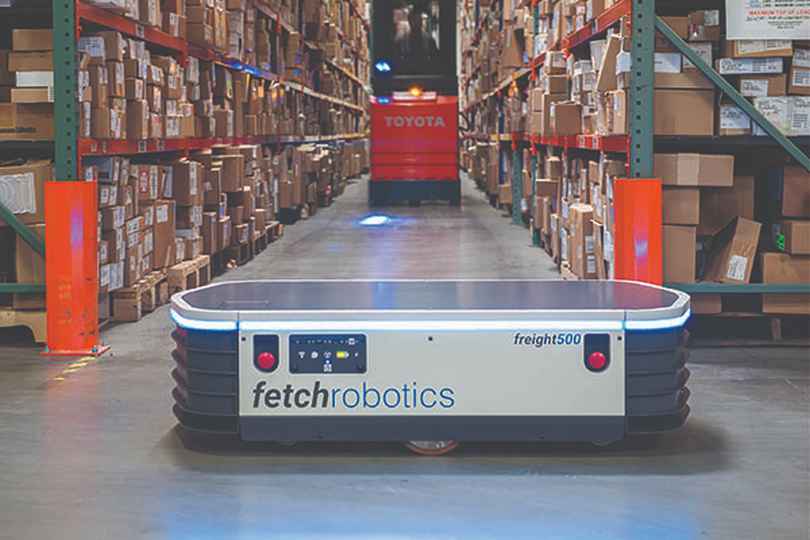Fetch Robotics secures $46 in Series C funding to meet increasing demands for its cloud robotics solution and accelerate international expansion

Fetch Robotics, a San Jose, California-based industrial robotics startup that develops and manufactures collaborative, autonomous mobile robot solutions for the warehousing and logistical markets, has raised $46 million inSeries C round of funding. The round was led by Fort Ross Ventures, with additional participation from CEAS Investments, Redwood Technologies, TransLink Capital and Zebra Ventures and all existing investors. To date, Fetch Robotics has raised a total of $94 million. The funding will be used for international expansion, to meet accelerating customer demand, and for ongoing research and development.
Founded in 2014 by Steve Hogan, Fetch Robotics is a venture-backed Silicon Valley startup. The startup leverages its deep robotics expertise to provide reliable and safe collaborative AMR (Autonomous Mobile Robot) solutions for two commercial applications: material handling and data collection. Fetch Robotics provides the market’s only cloud-driven AMR solution that addresses material handling and data collection for warehousing and intralogistics environments. Fetch Robotics’ AMRs reduce costs and improve throughput, efficiency, and productivity, while working alongside people.
By combining mobile robotics with the power of the cloud, the Fetch Cloud Robotics Platform provides on-demand automation solutions for material handling and inventory management, with the power to find, track, and move almost anything in any facility. Fetch Robotics’ solutions and services are deployed in leading distribution, fulfillment, and manufacturing centers around the world, augmenting workforces to drive increased efficiency and productivity.
“Customers have responded enthusiastically to our unique Cloud Robotics solution, and we’re responding by securing the funds we need to continue growing and enhancing our offerings,” said Melonee Wise, CEO of Fetch Robotics. “The competitive pressures for excellence in logistics have never been greater. Our Autonomous Mobile Robots and cloud platform enables our customers to meet their customers’ demands while meeting their own financial objectives.”
While supply chain automation isn’t new to logistics or manufacturing, what is new is the need for speed – to produce, transport, package, ship, deliver and adapt – at a pace never before seen. At the same time, the labor shortages that plague e-commerce operations are also impacting distribution, fulfillment and manufacturing facilities. In a recent survey, the number one concern among logistics industry leaders was “hiring qualified workers,”1 and an additional survey2 reported that manufacturing executives are worried that around 60% of current open positions in their businesses are unfilled due to lack of skilled workers. It’s therefore no wonder that warehouse and manufacturing operators are struggling to find solutions that let them meet the demanding workload.

